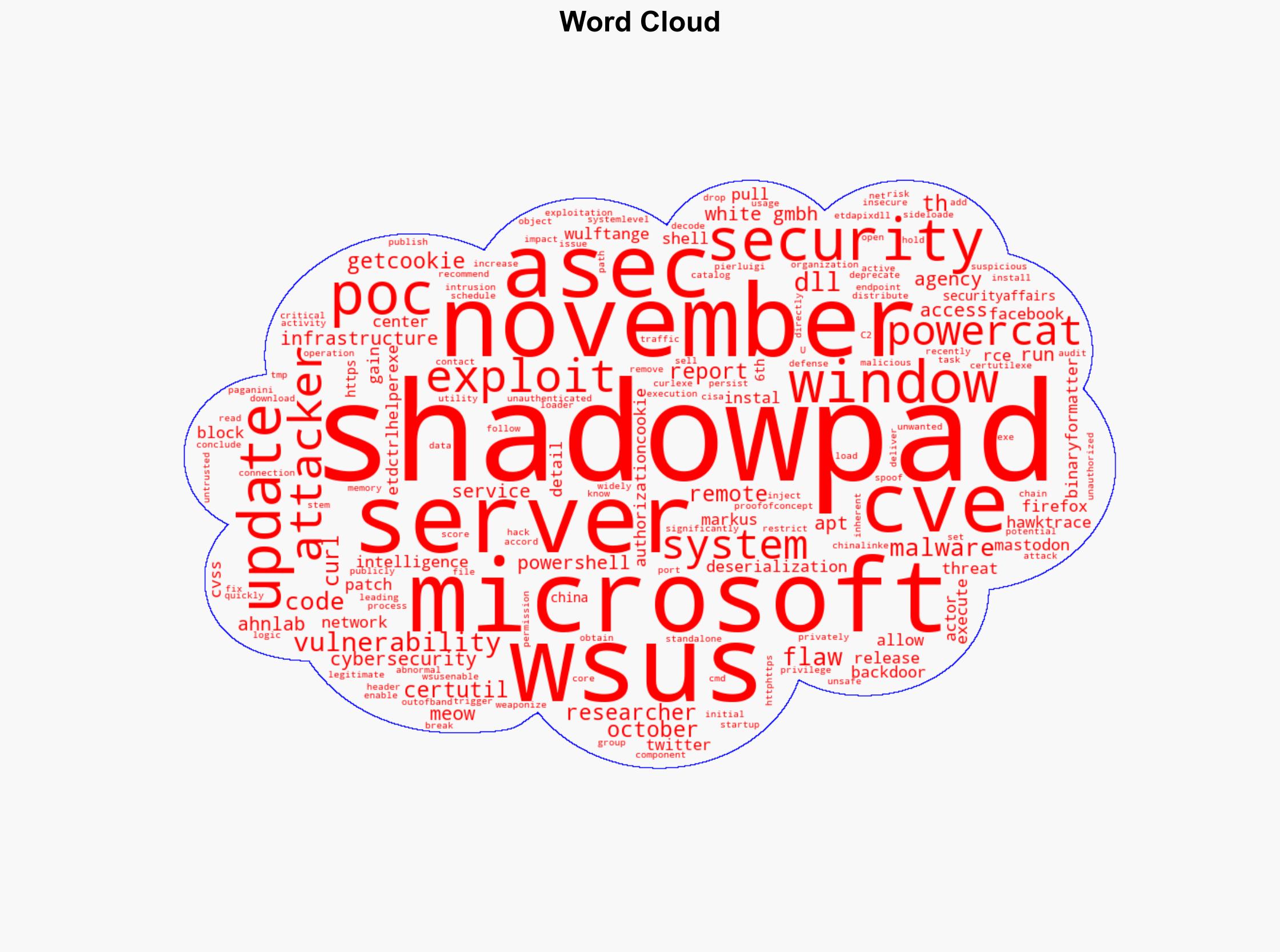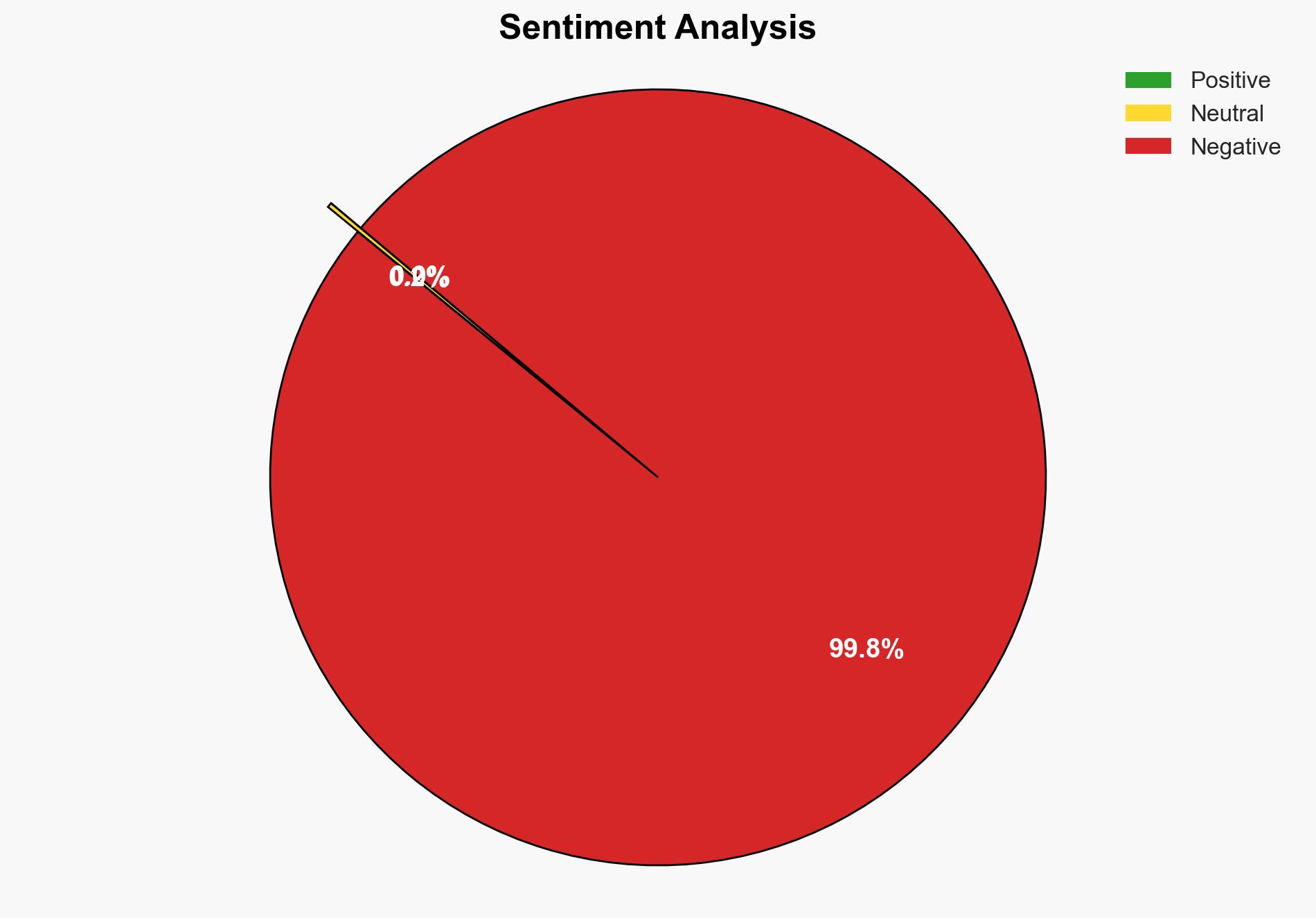Attackers deliver ShadowPad via newly patched WSUS RCE bug
Published on: 2025-11-24
AI-powered OSINT brief from verified open sources. Automated NLP signal extraction with human verification. See our Methodology and Why WorldWideWatchers.
Intelligence Report:
1. BLUF (Bottom Line Up Front)
The exploitation of the newly patched WSUS RCE vulnerability (CVE-2025-59287) by threat actors to deliver ShadowPad malware poses a significant cybersecurity threat. The most supported hypothesis is that a China-linked APT group is leveraging this vulnerability to expand their foothold in targeted networks. Immediate patching and network monitoring are recommended. Confidence Level: High.
2. Competing Hypotheses
Hypothesis 1: A China-linked APT group is exploiting the WSUS RCE vulnerability to deploy ShadowPad malware for intelligence gathering and network infiltration.
Hypothesis 2: A non-state actor or cybercriminal group is using the vulnerability opportunistically to distribute ShadowPad for financial gain through cybercrime activities.
The first hypothesis is more likely due to the sophisticated nature of ShadowPad, its historical association with Chinese APT groups, and the strategic value of compromising WSUS servers for intelligence purposes.
3. Key Assumptions and Red Flags
Assumptions: It is assumed that the threat actors have the capability to exploit the vulnerability effectively and that ShadowPad is primarily used by state-sponsored actors.
Red Flags: The rapid weaponization of the PoC exploit code suggests premeditated intent. The use of legitimate Windows utilities (curl, certutil) for malware installation indicates a high level of operational security.
Deception Indicators: The public release of PoC code could be a deliberate attempt to obfuscate the true origin of the attacks by encouraging widespread exploitation.
4. Implications and Strategic Risks
The exploitation of this vulnerability could lead to significant data breaches, intellectual property theft, and disruption of critical infrastructure. Politically, it may escalate tensions between nation-states, particularly if attribution to a state actor is confirmed. Economically, affected organizations could face substantial financial losses due to remediation costs and reputational damage.
5. Recommendations and Outlook
- Mitigation: Organizations should immediately apply the Microsoft patch for CVE-2025-59287 and restrict WSUS server access to trusted networks. Enhanced monitoring for abnormal network activity, especially involving PowerShell, certutil, and curl, is advised.
- Exploitation Opportunity: Develop threat intelligence capabilities to detect similar exploitation patterns and share findings with industry peers.
- Best-case Scenario: Rapid patch deployment and effective network monitoring prevent widespread exploitation.
- Worst-case Scenario: Delayed patching leads to extensive network compromises and data breaches.
- Most-likely Scenario: Targeted attacks continue against organizations with delayed patching or inadequate network defenses.
6. Key Individuals and Entities
Pierluigi Paganini, Markus Wulftange, AhnLab Security Intelligence Center (ASEC), CODE WHITE GmbH, Microsoft, U.S. Cybersecurity and Infrastructure Security Agency (CISA).
7. Thematic Tags
Cybersecurity, Vulnerability Exploitation, Advanced Persistent Threat (APT), ShadowPad, WSUS, China-linked Cyber Operations
Structured Analytic Techniques Applied
- Adversarial Threat Simulation: Model and simulate actions of cyber adversaries to anticipate vulnerabilities and improve resilience.
- Indicators Development: Detect and monitor behavioral or technical anomalies across systems for early threat detection.
- Bayesian Scenario Modeling: Quantify uncertainty and predict cyberattack pathways using probabilistic inference.
- Network Influence Mapping: Map influence relationships to assess actor impact.
Explore more:
Cybersecurity Briefs ·
Daily Summary ·
Support us





